A Word About Materials…
All of my artworks are handmade, and every piece is unique. Even replicated styles offer their own individuality in terms of pattern.
All of my artworks are handmade, and every piece is unique. Even replicated styles offer their own individuality in terms of pattern.
304 / 316 stainless steel
The original Damascus steel was made from high carbon wootz steel created in India and Sri Lanka.
The steel was imported into Damascus, Syria to supply a large weapons industry. It is unknown if the name was used because of imports and sales through the city, or if the fabric Damask with flowing water patterns (also named for the city of Damascus) was the name source.
Metallurgy is specific, and the creation of true Damascus steel ceased in the 1700’s. This could have been due to a disruption in trade routes leading to a change in raw materials used for the steel. The technique was lost and today there are still efforts to reverse engineer true Damascus steel to re-create the original formula.
Today, billets are made with layers of different types of steel, welded, folded and patterned to form unique wave-like patterns.
Care
Like any jewelry item, it is recommended that Damascus be kept from hot tubs and chlorinated water. Although it is steel, it is not immune to scuffs and scrapes. Keep it stored in a dry area and wash with mild soap and water, drying immediately.

14k palladium white gold
sterling silver
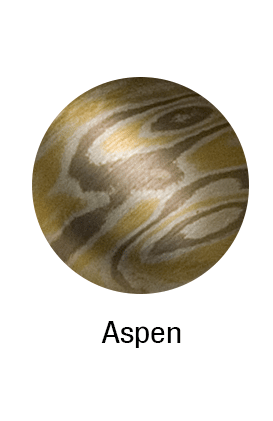
18k yellow gold
14k palladium white gold
sterling silver
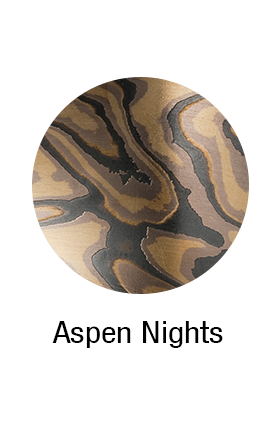
18k yellow gold
14k palladium white gold
sterling silver oxidized
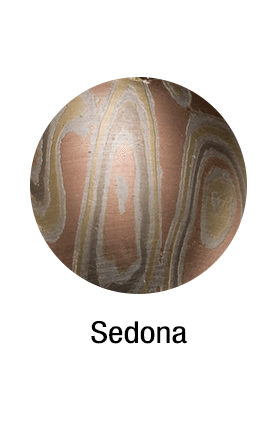
18k yellow gold
14k pink gold
14k palladium white gold
sterling silver
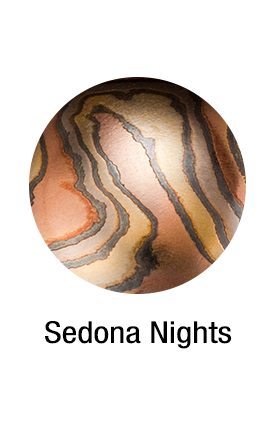
18k yellow gold
14k pink gold
14k palladium white gold
sterling silver oxidized
The name Mokumé-Gané (mokumé) translates to “wood grain metal” and is representative of the patterns achieved in its creation. The finished product displays myriad layers of coloured metals rippling and flowing in various directions. The creation of mokumé requires repetitively annealing (heating to “soften the metal” making it more malleable), rolling, twisting and gouging the metal with burrs. Each piece is carved by hand using a drill to achieve unique patterns.
Mokumé was the creation of Denbei Shoami, a 17th century master Japanese metalsmith. This traditional process was often the adornment of choice for the exquisite Samurai swords of warriors. Mokumé is created using precious and non-ferrous metals such as platinum, gold, palladium and silver as well as copper, brass and other alloys. Upwards of 30 layers of different metals or alloys are stacked together, heated and forged to form one piece of metal displaying alternating colours. The mokumé artist will choose both the type of metal and number of layers to create a specific look.
Traditional mokumé was a very difficult process to succeed with as there was a fine line between fusing and melting the metal. Being too cautious may have prevented the metals from fusing properly, resulting in the metals splitting apart when being worked (delamination). Today’s contemporary means of creating mokumé makes use of hydraulic presses, kilns and rolling mills to specifically control the process. Despite these modern amenities, it is still unusually laborious and time-intensive and can result in the metals failing to fuse. The successful result is a stack of several layers of metal diffusion-bonded (not soldered) together such that they atomically function as one piece of metal.
Without a comprehensive understanding of metallurgy, the successful fusing of different metals would be impossible. I manufacture the Mokumé-Gané billets in my studio and then design my pieces of jewellery from this material.
The highest contrast between the individual Gold and Silver alloys in your mokumé piece is obtained with a matte finish. In all likelihood, the item you purchased has a matte finish, but over time, the finish can and will change character. Do not place piece on hard surfaces where it can be scratched. Ideally, place in a box with tarnish resistant paper (first piece provided, other pieces available in fine jewellery stores).
To remove dirt and oil from gold or silver pieces
If the matte finish on the mokumé is in good condition, oils and dirt can be removed by placing the piece in a solution of warm soapy water. Rub gently, then rinse and dry with a soft cloth.
To remove tarnish:
This should be your first step if the piece is looking gray/black or dull.Tarnish is the natural oxidation process associated with the copper within the silver alloy.
Tarnished pieces of mokumé can be cleaned by occasionally dipping in Tarn-X ® or any liquid jewellery cleaner. Rinse thoroughly in cold water before washing in warm soapy water and drying. Do not dip pearls or pieces with a black patina in Tarn-X ®. Instead, apply the solution to the metal with a paper towel, q-tip, or toothpick, avoiding the pearls or black oxidized areas. A tarnish-resistant cloth (purchased at any reputable jeweler) placed with the piece will maintain its brightness.
To restore the matte finish on mokumé:
To be done occasionally when the piece becomes polished and the pattern has been obscured.Using either a fine or medium scotch-brite pad, saturate the pad with liquid soap and water and gently stroke the mokumé portion. Keep the pad saturated with soap so that you are constantly providing lubricant while you are gently abrading the surface. Take care not to abrade areas that are meant to be highly polished.
Please be aware that chlorine will adversely affect your jewellery. All jewellery should be frequently inspected for signs of wear and potential breakage.
A mokumé billet is actually the many layers of metal which have been bonded through heat and pressure to work as one piece of metal. It is comprised of up to 30 layers of metal with alternating colors. This mokumé billet is the raw material that I use to create my jewellery. Below is a brief explanation as to how a mokumé artist forms a billet.
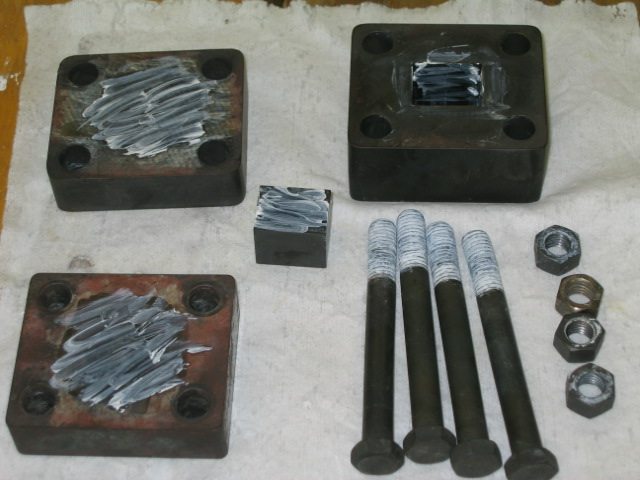
1. The die is prepared with boron nitride to prevent the metal sheets from fusing to the steel die body while in the kiln.
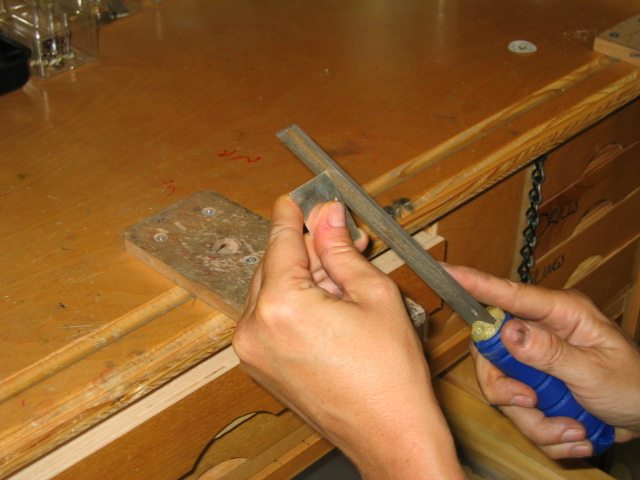
2a. The sheets of metal are filed precisely to fit the die body.

2b. The filed sheets of metal are then cleaned and set in the die body. These 2 steps are both important and time-consuming. If the metal is not cleaned properly, the slightest bit of dust or dirt can prevent the metals from bonding.
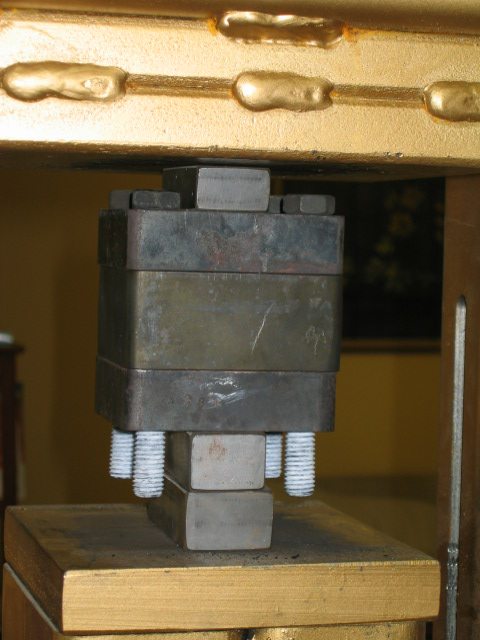
3.The die body and plates are bolted and compressed at high pressure to ensure that the sheets of metal that are used in creating the mokumé billet are in good contact and will bond.
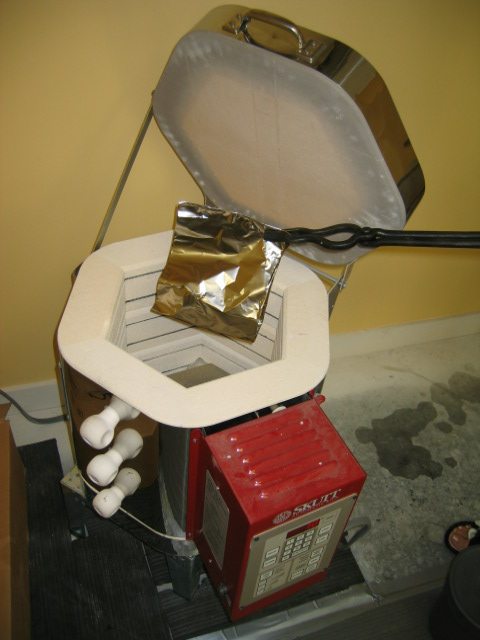
4. The entire die body is placed in a stainless steel bag with charcoal (to keep metal from oxidizing, which would prevent bonding) and placed in a kiln at high temperatures for 5-7 hours. The time and temperature are determined by the specific alloys that the mokumé artist has chosen for the billet. Without the correct combination of heat and time, the metals would fail to bond.
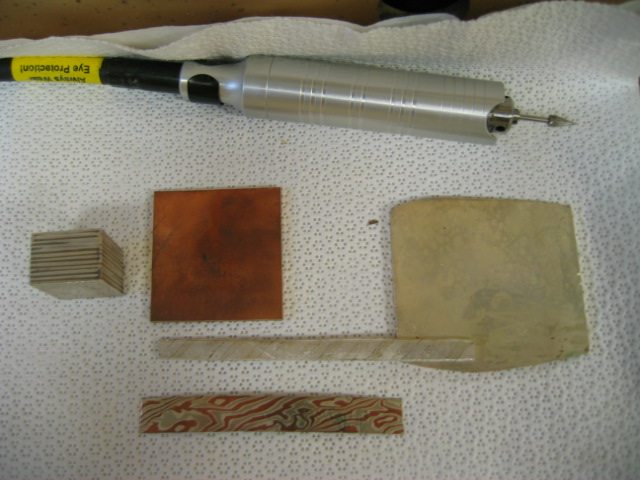
5. The die is removed from the kiln and allowed to cool in a manner appropriate to the metals used. Once cool, the billet is removed from the die body.

6. The mokumé billet is then cleaned, filed and inspected for any evidence of failure.
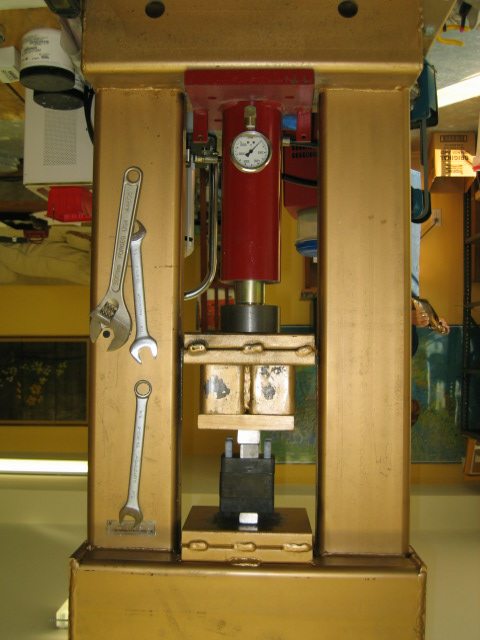
7. Repetitive use of the hydraulic press is necessary to reduce the thickness of the mokumé billet
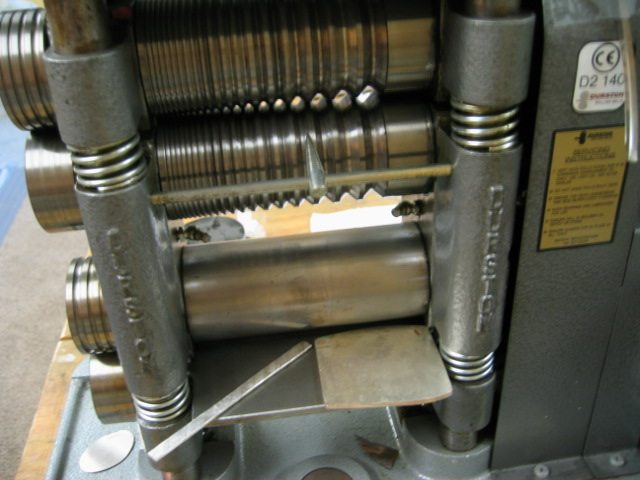
8a. Once the billet has been reduced sufficiently with the hydraulic press, the metal is put through the rolling mill to reduce in small increments If it is reduced too much in one pass, the metal could crack.
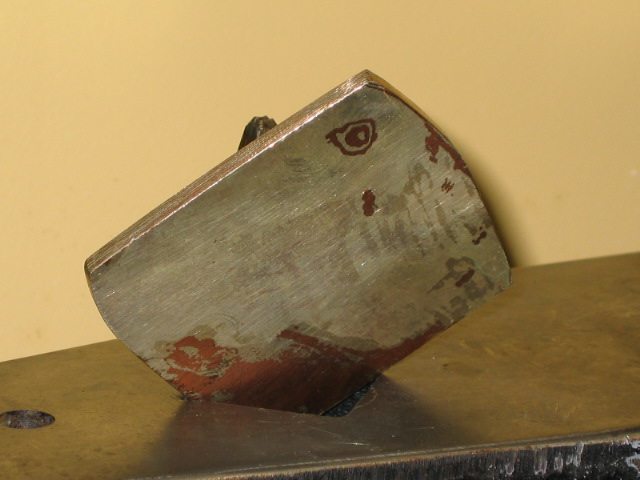
8b. The billet is taken down to a thickness of approxiamately 3mm.
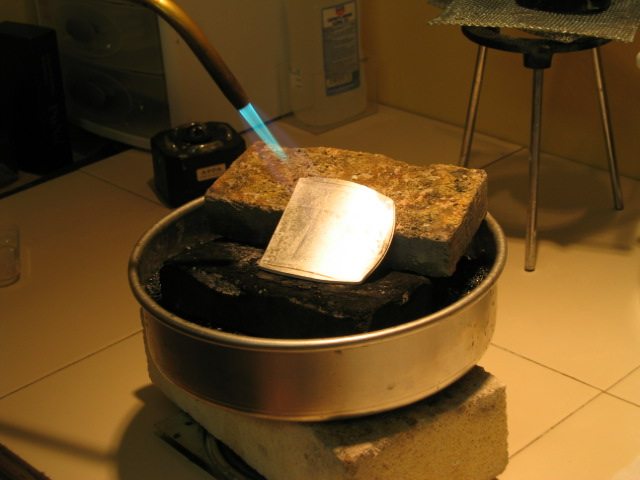
9. The mokumé billet must be annealed with a torch or in a kiln between each pressing &/or after a few passes through the rolling mill to soften the metal. The metal would otherwise become brittle and split.
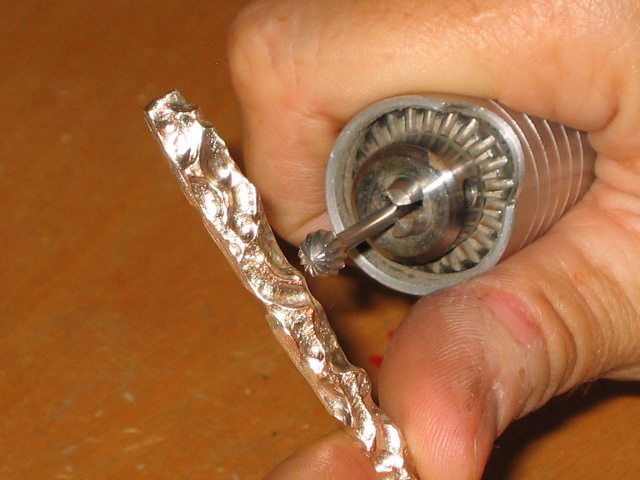
10. Each mokumé artist will use specific techniques to pattern their metal. It can be twisted, gouged, and punched using tools like chisels or burrs to “draw” on the metal. Once gouged, the metal is again rolled and annealed until the gauge (thickness) desired is acquired.
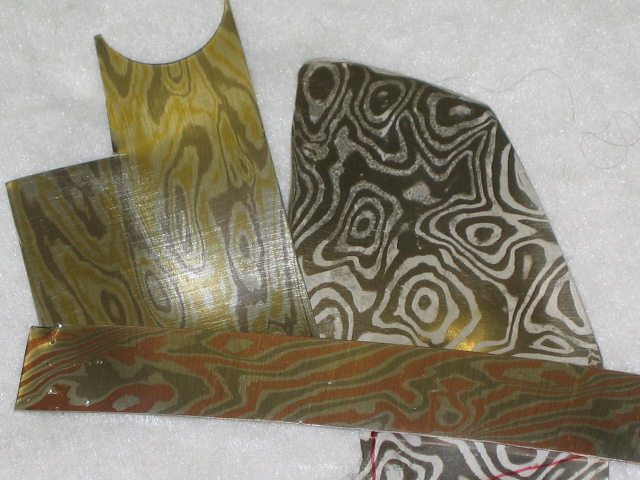
11. The end result is the metal known as mokumé-gané. The jewellery that I create from this metal can have a matte finish, which is a little more subtle, or can be etched in acid to create a beautiful relief between colors.